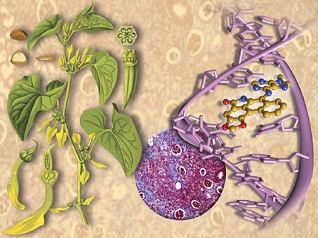Grollman, A. P.

Our research is centered on aristolochic acid (AA), a potent and selective human carcinogen and nephrotoxin produced naturally by Aristolochia plants. AA is unique in that it targets, with high specificity, two different organs, leading to two independent and devastating diseases. Acting as a carcinogen, AA causes otherwise rare urothelial carcinomas of the upper urinary tract, whereas its nephrotoxic effects in the kidney lead to irreversible chronic renal disease. Genes play an important role in determining individual susceptibility to AA, as not everyone exposed to the toxin develops kidney disease or cancer.
A translational research program of this breadth requires a multidisciplinary approach, and we make use of our expertise in the fields of synthetic chemistry, molecular and cellular biology, genetics, and physiology to unravel the pathobiology of these complex diseases and their relationship to AA. Our studies of this global disease are made possible by collaborations with urologists and nephrologists around the world who provide us with samples for analysis.
Our study populations include residents of (i) Balkan farming villages where Aristolochia plants grow as weeds and contaminate wheat grains, with an at risk population estimated at 100,000; and (ii) Asian countries where the use of Aristolochia herbs in the practice of Traditional Chinese Medicine is pervasive, potentially affecting more than ten million people. In addition to these human studies, we have established mouse models that are used for complementary mechanistic and genetic investigations of AA-induced kidney disease and cancer.
The current goals of our research group are to:
- Identify the genetic variants that confer susceptibility or resistance to the nephrotoxic and carcinogenic actions of AA.
- Discover specific gene mutations that drive the development of AA-induced urothelial cancer.
- Document and relate AA exposure to the prevalence of kidney disease and urothelial cancer in countries where the use of Aristolochia herbs in the practice of Traditional Chinese Medicine has been pervasive.
- Develop biomarkers, obtained by noninvasive procedures, that can be used to screen for persons at risk of developing AA-induced cancer and kidney disease.
- Establish the cellular mechanism(s) responsible for the nephrotoxic action of AA leading to kidney disease
- Deadly Remedy: A Mysterious Disease, a Medicinal Herb, and the Recognition of a Worldwide Public Health Threat. Chapter 6 - In Getting Risk Right, by Geoffrey C. Kabat (2016)
- Grollman AP, Scarborough J, and Jelakovic B. Aristolochic Acid Nephropathy: An Environmental and Iatrogenic Disease, in Advances in Molecular Toxicology 3, J Fishbein, Ed., Elsevier:Amsterdam, 2009.
- Chen CH, Dickman KG, Moriya M, Zavadil J, Sidorenko VS, Edwards KL, Gnatenko DV, Wu L, Turesky RJ, Wu XR, Pu YS, and Grollman AP. Aristolochic acid-associated urothelial cancer in Taiwan. Proc Natl Acad Sci USA 109:8242-6, 2012. PMID22493262
- Jelakovic B, Karanovic S, Vukolic-Lela I, Miller F, Edwards K, Nikolic J, Tomic K, Slade N, Brdar B, Turesky R, Stipancic Z, Dittrich D, Grollman AP, and Dickman KG. Aristolactam-DNA adducts are a biomarker of environmental exposure to aristolochic acid. Kidney Int 81:559-67, 2012. PMID22071594

